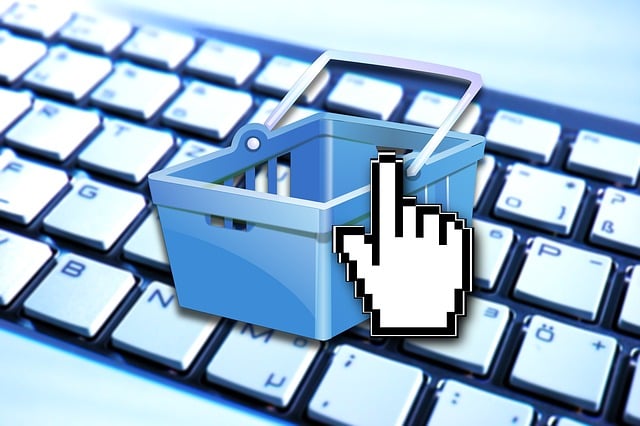Which App Is Best for Trade 2025: Top Picks and How to Choose
Author: Jameson Richman Expert
Published On: 2025-11-06
Prepared by Jameson Richman and our team of experts with over a decade of experience in cryptocurrency and digital asset analysis. Learn more about us.
Which app is best for trade is a question traders ask every year as markets, fees, and mobile features evolve. This article gives a comprehensive 2025-ready guide to selecting the best trading app for your needs — whether you trade stocks, forex, crypto, or derivatives — and reviews top platforms, evaluation criteria, practical setup tips, and links to advanced resources and tools.

Why the question “which app is best for trade” matters in 2025
Trading technology moves fast. Apps that dominated in 2020 may lose ground by 2025 if they don’t adapt to mobile-first features, improved security, low-latency execution, and seamless integrations with algorithmic tools and live data feeds. Choosing the right trading app affects execution speed, cost, research capabilities, and risk management. This guide helps you match an app to your strategy — from buy-and-hold investors to high-frequency crypto traders.
What to evaluate when choosing a trading app
Use this checklist as a decision framework. Score potential apps across these categories to find the best fit for your strategy.
- Security and regulation: Two-factor authentication (2FA), biometric login, cold-storage for crypto, insurance, and regulation by reputable authorities (SEC, FCA, etc.). For background on regulatory frameworks, see the SEC’s investor education pages and Wikipedia’s overview of financial regulatory bodies.
- Fees and spreads: Trading commission, maker/taker fees, withdrawal fees, and hidden spreads. For crypto, watch network gas costs added to exchange fees.
- Execution speed and reliability: Order routing, matching engine speed, and app uptime. Slippage matters for active strategies.
- Market coverage: Stocks, ETFs, forex, options, futures, CFDs, and crypto — does the app support your instruments?
- Order types and margin: Limit, stop, OCO (one-cancels-the-other), margin/leverage limits, and risk controls.
- Charting and research: Built-in technical indicators, drawing tools, screeners, news, and economic calendars.
- API and bot support: Is there a stable API, good documentation, and webhook or FIX connectivity for automated trading? If you plan to use bots, this is crucial.
- Ease of use: Intuitive UI/UX for placing trades quickly on mobile.
- Funding and withdrawals: Supported fiat currencies, bank transfers, debit/credit, stablecoins, and speed of withdrawals.
- Customer support: Live chat, phone, response SLAs, and helpful documentation.
Which app is best for trade: category-specific recommendations
No single app is perfect for everyone. Below are the best apps in 2025 by trader type and why they stand out.
Best for crypto spot and derivatives trading
Top contenders: Binance, Bybit, Bitget, MEXC.
- Binance: Massive liquidity, deep order book for most pairs, advanced features (spot, futures, options, staking), and strong mobile & web clients. For step-by-step setup and advanced features, consult a dedicated guide to the Binance trading application: Mastering the Binance Trading Application — Complete Guide. If you want to try Binance, you can register with this referral link: Binance registration.
- Bybit: Excellent for derivatives and leveraged products with a polished mobile app, risk controls, and strong charting. For practical tips using the app, read the Bybit guide: How to Use Bybit App Effectively. Try Bybit with this invite link: Bybit invite.
- Bitget: Popular for copy trading and derivatives; strong for traders who want social features plus API access. Bitget referral: Bitget registration.
- MEXC: Wide token listings and competitive fees, good for altcoin discovery. MEXC referral link: MEXC registration.
Best for US stock and options trading
Top contenders: Fidelity, Schwab, Interactive Brokers, Robinhood.
- Interactive Brokers (IBKR): Best for serious active traders with global market access, low margin rates, and advanced order tools. The mobile app (IBKR Mobile) supports advanced algo orders.
- Fidelity & Schwab: Best for long-term investors that want research, tax-aware tools, and retirement products.
- Robinhood: Best simple UI for new traders, zero-commission trades, but limited advanced order types and research.
Best for algorithmic and automated trading
If you build trading bots, choose an app/exchange with a robust API, stable websockets, testnet/sandbox, and clear rate limits.
- Binance API & testnet: Widely supported and well-documented. See bot creation walkthroughs such as this step-by-step guide: How to Create a Bot for Trading — Step-by-Step Guide.
- Bybit & Bitget APIs: Good for derivatives bots and backtesting with futures markets.
- Interactive Brokers API: Ideal for multi-asset algorithmic systems across equities, futures, and options.

How to choose the best trading app for your strategy
Follow these practical steps to pick and deploy the right app.
- Define your primary assets: Are you trading stocks, crypto, forex, options, or futures? Narrowing the asset class narrows the app choices.
- Decide your trading frequency: Casual investor, swing trader, day trader, or algo? High-frequency traders need lower latency and direct market access; casual investors prioritize research tools and low fees.
- List must-have features: Margin, advanced order types, option chains, futures, staking, or copy trading.
- Test multiple apps on demo or small accounts: Don’t risk large capital before testing execution, slippage, UI responsiveness, and funding/withdrawal flows.
- Check APIs and bot compatibility: If you’ll automate, confirm API coverage and sandbox availability. For bot-building tips and best practices, refer to a complete bot guide: trading bot guide.
- Assess security and legal protections: Check where the exchange is regulated and what user protections exist (e.g., SIPC protection for US equities vs. custody risks for crypto).
- Monitor hidden costs: Check deposit/withdrawal fees, spread costs, conversion fees, and inactivity fees.
Practical setup: from registration to live trading (a checklist)
Example flow to safely start trading on a new app:
- Create an account: Use secure email and password. For Binance, you can register here: Binance registration. For other exchanges, use their official referral links like MEXC (MEXC), Bitget (Bitget), and Bybit (Bybit).
- Enable 2FA and device management: Use an authenticator app (Google Authenticator, Authy) and whitelist withdrawal addresses where available.
- Complete KYC and set withdrawal limits: Add only required personal info and understand the verification tiers and limits.
- Fund a small test amount: Deposit a small amount to test deposits and withdrawals. For crypto exchanges, test with a small transfer to check network fees and confirmation times.
- Place a small live trade and evaluate: Check execution price vs. expected price and monitor slippage.
- Set risk management defaults: Use stop-loss, take-profit orders and position sizing rules consistent with your risk tolerance.
Real-world examples and use cases
Case: Beginner wanting to trade US stocks and ETFs
Goal: low fees, simple UI, strong research.
- Recommended apps: Fidelity or Schwab for research and account types; Robinhood for simplicity. Start with small trades, use built-in educational content, and set up recurring investments.
Case: Crypto spot trader who wants low fees and liquidity
Goal: deep liquidity, low taker fees, advanced charting.
- Recommended app: Binance. Use the mobile app for quick trades, and consult a Binance application guide here: Binance app master guide.
Case: Algorithmic trader building bots
Goal: stable API, sandbox, low-latency websocket.
- Recommended: Binance, Bybit, or Interactive Brokers for non-crypto. Learn bot construction from this step-by-step bot guide: bot creation guide.

Advanced features to prioritize in 2025
As markets evolve, the following features become differentiators for trading apps:
- On-chain analytics and wallet integration: For crypto traders, native wallet integration and transparent on-chain analytics are increasingly valuable. Real-time price-tracking guides can be helpful — see a live price tracking example for UK markets: Crypto live price UK — real-time tracking and trading guide.
- Built-in strategy backtesting & paper trading: Backtesting within the app saves time and helps refine strategies without risking capital.
- AI-assisted trade ideas: Curated signals and AI-generated summaries of order-flow and news can accelerate decision-making (use conservatively and cross-check sources).
- Seamless integration with bots: Exchanges that offer native webhook triggers, good API rate limits, and testnets reduce development friction; a bot-building guide can fast-track this: bot guide.
Security best practices for trading apps
Security should be your top priority. Follow these steps to minimize risk:
- Use hardware wallets for long-term crypto storage: Keep only active trading funds on exchanges; move long-term holdings to a hardware wallet.
- Enable 2FA and withdrawal whitelisting: Prefer authenticator apps over SMS if possible.
- Use unique, strong passwords: Employ a password manager and avoid reusing passwords across platforms.
- Limit API permissions: When using bots, grant only the necessary permissions (e.g., trading but not withdrawal) and rotate API keys regularly.
- Stay updated about phishing and social engineering: Always verify official domains and avoid clicking on unsolicited links. For context on exchange security practices and history, consult reputable sources like Wikipedia’s pages on cryptocurrency exchanges and major incidents: Cryptocurrency exchange — Wikipedia.
Comparing fees, liquidity, and slippage
Fees and liquidity vary significantly. Use these tips to estimate your true cost:
- Calculate round-trip costs: Commission + spread + maker/taker fees + network transfer fees (crypto).
- Estimate slippage: For large orders, slippage can dwarf commissions — check order-book depth and average daily volume.
- Use limit orders for avoidable slippage: Market orders execute immediately but may pick up slippage in thin markets.

How to keep improving after selecting an app
Choosing the app is the start — continuous improvement will keep you competitive:
- Track performance metrics: Win rate, average return per trade, maximum drawdown, and Sharpe ratio.
- Periodically re-evaluate: Re-score your app annually for fees, features, and security updates.
- Use educational content: Many apps have built-in courses and webinars. For crypto-specific strategy reviews and market snapshots, check resources like a market snapshot and trading guide: Did Bitcoin go up or down today? 2025 Market Snapshot.
Integrations and ecosystem: not just the app
An app’s integrations — wallets, tax tools, charting platforms, portfolio trackers — expand its value.
- Portfolio trackers: Sync multiple accounts via APIs for consolidated performance reporting.
- Tax and accounting: Use reliable tax reporting tools compatible with your exchange to streamline filings.
- Third-party analytics: Some traders prefer TradingView or CoinGecko for additional charting and token data; ensure your app integrates smoothly.
Useful high-authority references and further reading
For background on markets, trading rules, and definitions, these external resources are authoritative and helpful:
- Financial market — Wikipedia (overview of markets and instruments)
- Investopedia — What Is Trading? (practical definitions and strategy explanations)
- U.S. Securities and Exchange Commission (SEC) — Investor alerts (regulatory guidance)

Common mistakes to avoid when choosing a trading app
Avoid these pitfalls which can cost time and money:
- Choosing solely for low fees: Ultra-low fees are attractive but can come with poor customer service, thin liquidity, or limited features.
- Not testing with a small amount first: Apps can behave differently under real trading conditions.
- Overexposure to a single platform: Keep funds diversified across wallets/exchanges for safety.
- Misunderstanding margin and leverage: Leverage magnifies losses; ensure you understand liquidation processes.
Final recommendation: matching app to trader profile
Summary recommendations based on common profiles:
- Beginner stock investor: Fidelity, Schwab, or Robinhood for ease-of-use and educational tools.
- Active equities/options trader: Interactive Brokers or Schwab’s StreetSmart for advanced order types and low margin rates.
- Crypto spot + derivatives trader: Binance for liquidity and features; Bybit or Bitget for derivatives and copy trading. Use the Bybit app guide for practical tips: Bybit app guide.
- Algo/bot trader: Choose exchanges with robust APIs and testnets: Binance, Bybit, or IBKR. Start with the bot-building guide: how to create a bot.
Case study: From setup to live results using Binance + bot
Example: A mid-frequency crypto trader wants to use Binance and deploy a market-making strategy via a bot.
- Create account on Binance (register), complete KYC, enable 2FA.
- Review the Binance mobile and web features using a complete guide: Binance app master guide.
- Build and backtest the bot using an API testnet and consult a bot creation guide: bot guide.
- Deploy with conservative position sizing, monitor latency, and use withdrawal whitelisting for security.
- Track P&L and adjust spreads to account for fees and adverse selection; leverage the market snapshot resource for macro context: 2025 market snapshot.

Conclusion — which app is best for trade in 2025?
There is no single answer to “which app is best for trade” that fits every trader. The right app depends on your asset class, trading frequency, appetite for automation, and security needs. For crypto traders, Binance and Bybit remain leaders in liquidity and features — consult the specific guides linked above to set up and use these apps effectively. If you plan to automate, prioritize exchanges with robust APIs and testnets and use trusted bot-development resources. Finally, always prioritize security practices like hardware wallets for custody and 2FA for accounts.
Further reading and resources:
- Market snapshot and trading guide (Bitcoin 2025)
- How to create trading bots — step-by-step
- Complete guide to the Binance trading application
- How to use the Bybit app effectively
- Crypto live price UK — tracking & trading guide
Ready to try a platform? Register and explore with these official links: Binance (register), MEXC (register), Bitget (register), and Bybit (invite).
If you’d like, I can create a personalized app comparison sheet based on your assets, trading frequency, and priorities — tell me what you trade and I’ll score recommended apps for you.